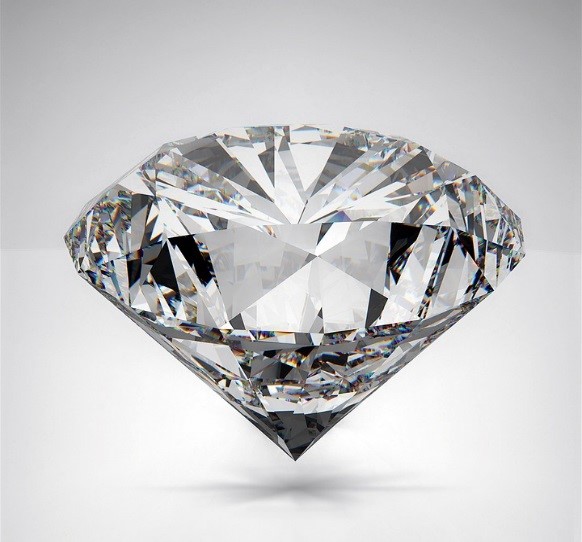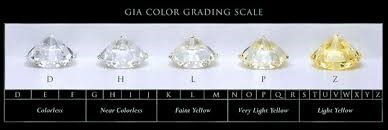Did you ever wonder where the love of diamonds began? Who started the engagement ring? What makes diamonds valuable?

People’s love for diamonds started in India where they were first discovered; where they were found in rivers and streams. According to GIA (Gemological Institute of America), some historians estimate that India was trading in diamonds as early as the fourth century BC.
Later on, diamonds made their way to Western Europe and to Venice’s medieval markets.
1400s – Diamond jewelry became fashionable for Europe’s elite.
1700s – India’s diamond supply started declining.
Diamonds were discovered in Brazil by people panning for gold.
1800s – Diamonds were found in South Africa
1888 – De Beers Consolidated Mines Limited was established by Cecil Rhodes.
1900 – De Beers controlled 90 percent of the diamond mining production in South Africa.
1940s & ‘50s – Gemological Institute of America (GIA) created the diamond grading system.
Are you wondering how many diamond rough cut carats were produced? By the 1870s it was well under one million carats. In the 1920s, it was around three million carats, escalating to an annual production of around 50 million carats in the 1970s, and by the 1990s the annual production surpassed approximately 100 million carats. Wow!
Now, about the first engagement ring. Do you know who started it? It was Archduke Maximillian of Austria when he gave it to his love Mary of Burgandy in 1477. Then European women of aristocracy and nobility started receiving engagement rings. In the Victorian age, diamonds were combined with other gemstones, usually in a flower shape and were called “pose rings.” In the Edwardian age, diamonds were mixed with other gemstones, but they were mounted in filigree settings. Now, let’s move ahead to the modern era of diamonds when GIA instituted the diamond grading system, which determines the value of a diamond.
GIA grades diamonds based on the 4C’s (color, clarity, cut, and carat weight).
Color
Diamond color grading system is based on a scale from D to Z. This measurement scale starts from the degree of colorless compared to master stones under controlled lighting. D represents colorless, with the closer to Z the more color is present.

Clarity
GIA looks at the clarity of a diamond consisting of the number, size, relief, nature, and the position of internal inclusions and external blemishes and how these will affect the overall appearance. “The GIA Diamond Clarity Scale has six categories, some of which are divided for a total of eleven specific grades.” (gia.edu)

Cut
According to GIA, the diamond’s cut is the most crucial to the stone’s final beauty and value; it is the most complex and technically difficult to analyze.” The brightness, fire (scattering of white light into colors of the rainbow), and scintillation (sparkle, pattern of light and dark areas caused by reflections inside the diamond). Diamond cuts come in several different shapes, such as emerald, heart, and oval.

Carat Weight
Carat weight is how much a diamond weighs. Subdividing it into 100 ‘points’ will give a more precise weight of the diamond to the hundredth decimal place, for example 0.25 diamond.
Fancy diamonds are available in colors of the rainbow, blue, green, orange, and red being the rarest, and yellow and brown being more common. These diamonds will be discussed in a later issue.
A few famous large carat diamonds are the Hope Diamond 45.52ct, Uncle Sam Diamond 40.23ct, and the Cullinan Diamond 3,106ct. The Hope Diamond is from India and was said to be cursed. Evalyn McLean said that it brought her luck. I guess luck is relative, because after she acquired it her son died in a car accident, her husband divorced her and died insane, and her daughter committed suicide. It is now at the Smithsonian Institute. The Uncle Sam Diamond was found in Arkansas at The Crater of Diamonds State park in 1924, while panning for diamonds. It is the largest diamond found in U.S. The Cullinan Diamond, the world’s largest rough diamond, was found in South Africa in 1905 and was cut into 9 major diamonds, 96 smaller diamonds, and smaller fragments.
“In the first century AD, the Roman naturalist Pliny stated: ‘Diamond is the most valuable, not only of precious stones, but of all things in this world.” Do you agree?
Stay tuned for next month’s entry, as I introduce some interesting facts on emeralds!



You had me at diamond!! ♡♡
LikeLike